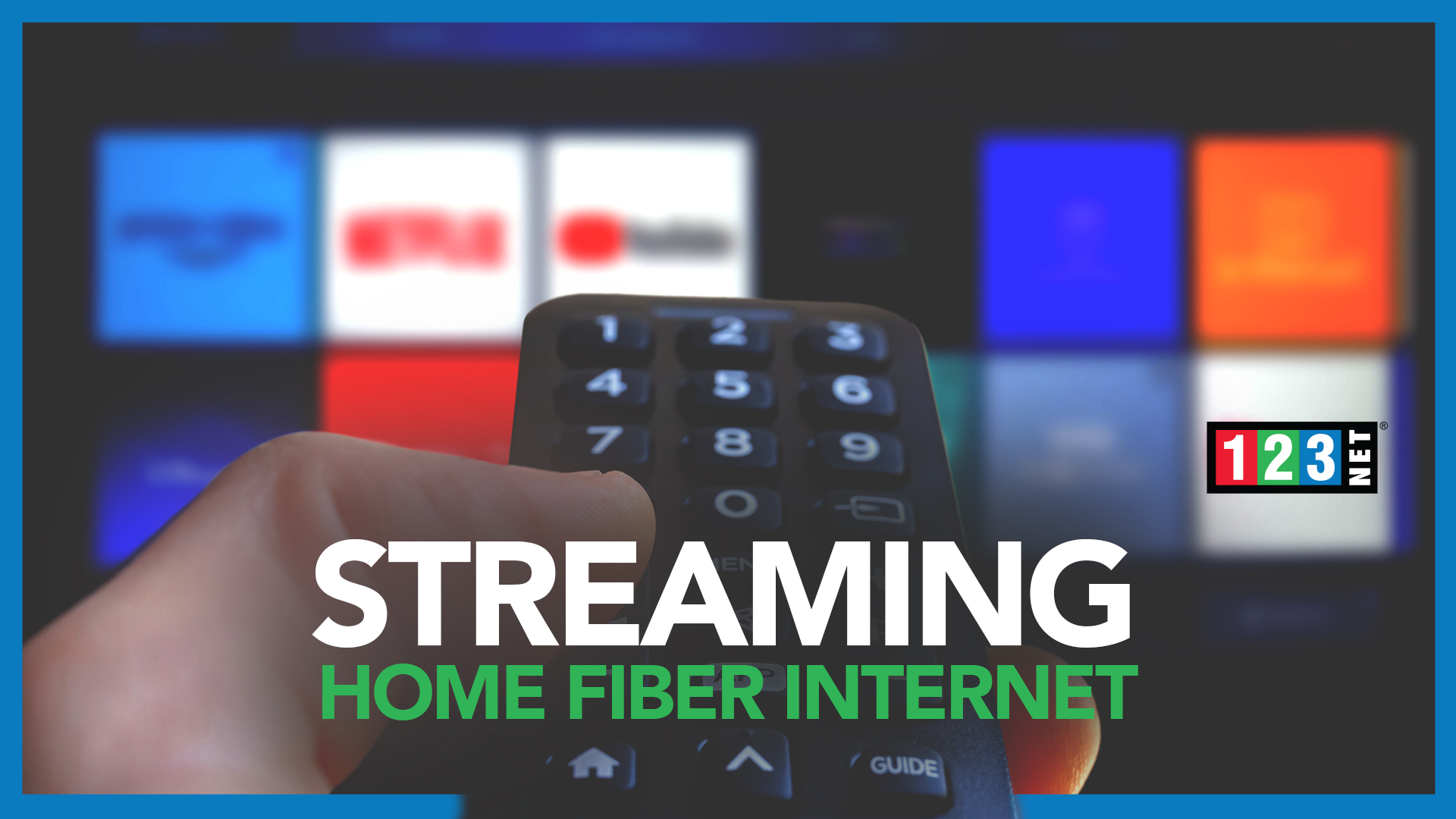
What is Broadband?
Broadband is crucial in our digital era, reshaping how we share information, communicate, and conduct business. Moving from slow dial-up to today’s swift, ubiquitous networks signifies a major tech shift. This shift has propelled the information age. Fast and dependable, broadband is now a basic need, much like water or electricity. It’s vital for both personal and work life. Broadband grants immediate access to vast online resources and supports worldwide communication. It eliminates distance barriers, making the world more interconnected. Furthermore, broadband has spurred digital business growth, e-commerce, and telecommuting. It’s transforming the global economy, fostering innovation, and creating job opportunities.
Different Types of Broadband
Broadband, fundamentally, represents the modern standard for internet connectivity, offering high-speed access that far surpasses the capabilities of older dial-up services. Defined by its always-on connection and ability to transmit data at rapid speeds, broadband has become synonymous with fast, reliable internet service. This essential technology underpins much of today’s digital activity, from streaming high-definition video to enabling complex cloud-based computing solutions.
The landscape of broadband technology is diverse, encompassing several types of connections, each with its unique advantages and applications. Digital Subscriber Line (DSL) utilizes existing telephone lines to provide a high-speed connection, offering a cost-effective solution for many users. Fiber-optic broadband, on the other hand, uses strands of glass fibers to transmit data at speeds that can exceed those of DSL and cable, providing an ultra-fast and reliable connection that is particularly beneficial for high-demand internet users.
Cable broadband uses coaxial cables, like those for TV, to provide faster speeds than DSL and wide availability. Satellite broadband, essential in remote areas, uses satellites for internet where ground options are scarce. Wireless broadband, covering LTE and 5G, delivers flexible, fast internet without fixed lines.
Each type of broadband connection plays a crucial role in the ecosystem of internet service, supporting a wide array of data transmission needs and ensuring users can access high-speed internet connectivity, regardless of their location or specific requirements.
Why is Broadband Important in Economic Development
Broadband internet is not just a tech advance; it’s a key driver of global economic growth, creating jobs, boosting GDP, and helping businesses thrive digitally. As essential infrastructure for fast data and connectivity, it underpins the modern economy, enhancing innovation and efficiency in various sectors.
In rural areas, broadband acts as a great equalizer, offering communities the opportunity to participate in the global economy. Access to high-speed internet enables rural businesses to reach beyond local markets, accessing customers, suppliers, and partners worldwide. This connectivity is crucial for agricultural sectors, allowing for the adoption of modern, data-driven farming techniques that increase productivity and sustainability. Rural broadband also supports the creation of new jobs in technology-driven industries, contributing significantly to local and national GDP growth.
Urban regions, already hubs of economic activity, see further amplification of their economic potential through broadband access. High-speed internet is essential for the growth of digital economies, supporting everything from startups and SMEs to multinational corporations. It enhances workforce efficiency by enabling remote work, telecommuting, and online collaboration, making businesses more resilient and adaptable. Moreover, broadband facilitates the emergence of new business models and services, from e-commerce platforms to cloud-based solutions, driving innovation and competitiveness in the marketplace.
Economic Impact
Broadband’s impact on economic development is also evident in its ability to attract investment. Regions with robust broadband infrastructure are more appealing to investors, as they offer the technological capabilities essential for modern business operations. This investment, in turn, stimulates further economic growth, creating a virtuous cycle of development.
Through case studies from both rural and urban settings, it’s clear that broadband is not just a tool for connecting people to the internet; it’s a critical infrastructure that supports economic development, job creation, and global competitiveness. Its role in enabling businesses to thrive, enhancing workforce efficiency, and fostering innovation across sectors is a testament to broadband’s central position in the modern economy.
Why is Broadband Important in Education
Broadband internet has transformed education, removing learning barriers and creating vast opportunities for both students and educators. It offers fast access to extensive resources, enriching education, fostering innovative teaching, and supporting personalized learning.
Broadband connectivity has been instrumental in the proliferation of e-learning platforms and remote education opportunities. This has made it possible for students to access lectures, coursework, and educational materials from anywhere in the world. This level of accessibility is particularly crucial in democratizing education, ensuring that geographical location, socio-economic status, or mobility issues are no longer impediments to receiving a quality education.
Moreover, broadband facilitates interactive and multimedia content, which can significantly improve student engagement and cater to diverse learning styles. Video tutorials, virtual laboratories, and real-time collaboration with peers and instructors across the globe are just a few examples of how broadband can enrich the learning experience. This enhanced engagement is linked to improved performance. This is because students are more likely to grasp complex concepts and retain information when they are actively involved in their learning process.
In addition, broadband access supports the development of digital literacy skills, which are essential in today’s technology-driven world. By integrating internet-based resources and tools into the curriculum, educators can prepare students for the digital challenges of the future. This helps make learning not only more accessible and inclusive but also more relevant to the demands of the 21st-century workforce.
Why is Broadband Important in Healthcare
Broadband internet has become crucial in healthcare, revolutionizing service delivery and access. With telemedicine, patients can remotely consult doctors, reducing physical visits and increasing access in remote areas. This not only improves convenience but also extends the reach of specialized care beyond geographical limits.
Broadband enables remote health monitoring, using wearables and home devices for continuous health tracking. This is especially useful for chronic conditions, allowing for prompt care adjustments and better disease management. Additionally, real-time data from monitoring leads to personalized healthcare, adapting treatments to each patient’s needs.
The role of broadband in healthcare extends to the dissemination of health information, empowering patients and healthcare providers with access to the latest research, treatment options, and best practices. However, the increasing reliance on digital health technologies underscores the importance of network security and online privacy. Protecting patient data against unauthorized access is paramount, as breaches can have serious implications for patient confidentiality and trust in digital healthcare services.
Through case studies, it becomes evident that broadband connectivity is not just enhancing healthcare delivery but is also instrumental in improving healthcare outcomes. By enabling innovations like telemedicine and remote health monitoring, broadband is at the forefront of a healthcare revolution, making services more accessible, efficient, and patient-centered, all while emphasizing the critical need for robust network security measures to protect sensitive health information.
Broadband and Social Inclusion
In our digital age, broadband access is key to social inclusion. It bridges the digital gap, ensuring everyone, especially those in underserved or rural areas, can join the digital economy and society. This access opens doors to vital services like education, healthcare, and government offerings. It also fosters cultural integration and social ties, crucial for united communities.
For communities lacking services, broadband is an empowerment tool. It boosts digital skills needed in today’s world. The internet, a huge knowledge source, offers lifelong learning, skill enhancement, and better job prospects in the digital sector. It also supports democratic engagement, access to social services, and cultural and community involvement. This enhances a sense of belonging and inclusion.
Broadband levels the field for disabled individuals by offering assistive tech and enabling telework and telehealth, enhancing life quality. It also helps social integration, connecting people with similar interests or challenges, fostering support networks.
Thus, universal broadband isn’t just about tech infrastructure. It’s about creating an inclusive society where everyone can prosper. Enhancing digital literacy and equitable access to information and services, broadband empowers all, regardless of socio-economic background, to seize digital age opportunities.
Broadband for Businesses
In today’s fast-paced digital economy, broadband has become an indispensable asset for businesses across the globe. Its role extends beyond mere connectivity; it is a vital enabler of the digital transformation that is reshaping industries. Broadband facilitates e-commerce, supports cloud computing, and enables remote working—three pillars that are crucial for the competitiveness and sustainability of modern businesses.
E-commerce, powered by broadband, allows businesses to reach a global marketplace, transcending geographical limitations and opening up new avenues for growth. Small and medium-sized enterprises (SMEs) can compete on a larger stage, leveraging online platforms to sell products and services directly to consumers worldwide. This democratization of market access has spurred innovation and competition, driving businesses to improve product offerings and customer service.
Cloud computing, another cornerstone of the digital business landscape, relies heavily on broadband for its implementation. The ability to store, manage, and process data over the internet, rather than on local servers or personal computers, offers businesses flexibility, scalability, and efficiency. Broadband enables real-time data access and collaboration, allowing teams to work together seamlessly, regardless of their physical location. This has not only reduced IT costs but also accelerated the pace of innovation, as companies can quickly deploy and scale new applications.
Remote Working
Remote working, a trend that has seen exponential growth, is made possible through broadband. The COVID-19 pandemic underscored the importance of broadband in maintaining business continuity as companies shifted to remote operations. Broadband connectivity has allowed employees to stay productive and engaged, breaking down traditional office barriers and fostering a more flexible work culture. This shift has significant implications for work-life balance, talent acquisition, and operational costs, offering businesses a competitive edge in attracting and retaining top talent.
Case studies from various sectors, from tech startups to traditional manufacturing firms, illustrate the transformative impact of broadband. Companies that have embraced broadband and its associated technologies have seen enhanced operational efficiency, expanded market reach, and increased customer satisfaction. These success stories highlight the critical role of robust network infrastructure and sufficient bandwidth in enabling businesses to thrive in the digital age.
In conclusion, broadband is not just a tool for businesses; it is a catalyst for growth, innovation, and resilience. As the digital economy continues to evolve, the importance of broadband for businesses will only increase, underscoring the need for continued investment in network infrastructure to support the demands of the future.
Future Trends of Broadband
The horizon of broadband technology promises immense advancements. These aim to redefine internet speed, reliability, and accessibility. The rollout of 5G technology is a key transformation. It offers faster speeds, significantly lower latency, and the ability to connect many devices at once. This progress is not just for quicker mobile internet. It also enables smart applications, from autonomous vehicles to IoT devices, requiring seamless, real-time connectivity.
Fiber optics technology is also evolving. It promises unmatched speeds and bandwidth. Fiber can transmit data over long distances with little loss. This makes it essential for the future internet backbone. It helps manage the growing data traffic.
Wireless networks are evolving too. Technologies like Wi-Fi 6 will provide more efficient, faster, and secure connections. These improvements support the growing need for wireless connectivity. They are vital in homes, workplaces, and public areas. This supports a more connected, mobile society.
Developments in 5G, fiber optics, and wireless networks are creating a future with high-speed internet everywhere. They are overcoming current limitations and opening up new connectivity possibilities. These technologies will have wide-reaching impacts. They promise to transform industries, empower smart cities, and bridge the digital divide. Thus, the next broadband technology generation will be inclusive, accessible, and meet future digital demands.
FAQs on DIA Bandwidth
- What is the difference between DIA and broadband? A: DIA offers a dedicated, private connection with guaranteed speeds and SLAs. Unlike broadband, which is shared among many users.
- How does DIA bandwidth impact cloud computing? A: DIA enhances cloud access performance. This ensures that businesses can use cloud services efficiently without latency or bandwidth issues.
- Can DIA bandwidth scale with my business growth? A: Yes, DIA is highly scalable, allowing businesses to increase their bandwidth as their needs grow.
- What are the typical SLAs associated with DIA? A: SLAs for DIA typically guarantee uptime, bandwidth, and support response times. This provides businesses with assurance of service quality.
Conclusion
Dedicated Internet Access (DIA) bandwidth represents a vital investment for firms focusing on reliable, fast, and secure internet access. Its advantages, such as increased productivity and better cloud service functionality, position it as a key asset for contemporary businesses. A thorough evaluation of a company’s specific needs allows for the selection of an optimal DIA solution. This ensures the establishment of a sturdy internet framework capable of supporting current and future operations.
The strategic selection of DIA is crucial for leveraging its full potential. It involves understanding the unique requirements of your business and matching them with the right service offering. This alignment is essential for maximizing the benefits of DIA, including consistent internet performance and enhanced security measures.
Investing in DIA promises substantial returns by fostering business expansion and enhancing operational productivity. The right DIA setup meets current needs and supports growth, building a digital business base. Thus, investing in DIA is strategic, securing a competitive edge and long-term digital success.
FAQ Section
- What is the minimum speed for a connection to be considered broadband? Broadband is defined as having a minimum download speed of 25 Mbps and an upload speed of 3 Mbps, according to the FCC.
- How does broadband contribute to environmental sustainability? Broadband aids environmental sustainability by reducing the need for physical travel and enabling efficient energy use through smart technologies.
- Can broadband access improve quality of life? How? Yes, broadband access can enhance quality of life by facilitating access to online education, telehealth services, and remote work opportunities.
- What are the barriers to broadband access and how can they be overcome? The main barriers to broadband access include high deployment costs, lack of infrastructure in remote areas, and low digital literacy, which can be addressed through government investment, targeted subsidies, and educational initiatives.




